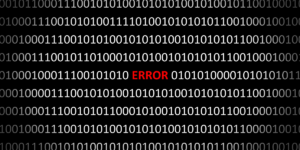A vision long nourished by ISI Executive Director Herbert Schorr is now bearing tangible scientific fruit on the campuses of the University of Southern California.
Just ask USC College professor Thomas Jordan, who directs the Southern California Earthquake Center. Jordan specializes in seismic tomography, using shock waves from naturally occurring earthquakes to create three-dimensional computer images of the earth’s crust, much as doctors use sound and other waves to image the human body.Before installation of the Linux cluster supercomputer at the center, Jordan and his group used workstations, which are faster and more powerful than the typical office or home computer. To process one of the thousands of sampling functions needed to create a seismic tomography image took Jordan’s group approximately three days.
Using the HPCC Linux cluster, the same computation takes less than 20 minutes.
“As a result,” said Jordan, “we were able to go from one- dimensional images – mere lines – to two- and three- dimensional pictures that may one day help us predict earthquakes.”
USC vice provost for scholarly technology John Silvester cites Jordan’s experience as typical of how science is being done today. And that’s why, Silvester said, USC Information Services (ISD) and the USC School of Engineering’s Information Sciences Institute (ISI) began collaborating in 2000 to create HPCC.
Schorr was a leader in the push to make the Center a reality. “I believed at the time that USC had no choice but to build a supercomputing capability,” said Schorr, who now, with ISD’s Jerry D. Campbell, shares responsibilty for overall direction of HPCC. “It was simply not an option for us not to go in this direction. ”
“A big shift has occurred toward intensive computation – in genomics, pharmacology, many areas of engineering, and other fields as well,” Silvester added. “In computing, we now have two extremes: We have the desktop PC, which is limited in power, and the big supercomputing centers, which are heavily booked and hard to get into. We saw a real need for USC to provide a mid-level system, like the Linux cluster,” he added.
USC chief information officer Jerry D. Campbell adds another element. “If USC is going to continue its rise among first- class American research universities, second-class computing is not an option,” he said.
HPCC operations director Jim Pepin, who is also chief technology officer for ISD and project leader for ISI, supervised the assembly and growth of the Linux Cluster.
Cluster computers link dozens or, in the case of the HPCC machine, hundreds of individual processors, each of which is nearly identical to those found in desktop personal computers. Special programs break down a cluster’s computing job into many separate, independent operations that then can be run simultaneously – a technique known as parallel processing. Each “node” of the cluster has two Intel processor chips. A 320-node cluster computer, for example, yields the computing power of 640 PCs.
Working with deputy chief information officer Mike Pearce and ISD director of supercomputing Dennis R. Smith, Pepin is now scoping out the further expansion of the Linux cluster, already the largest of its kind in Southern California academia, from 576 nodes to more than 1000, which will make it one of the largest clusters in the world.
To introduce faculty members to the possibilities, HPCC has established a speakers program, which brings supercomputing stars to USC to explain the new techniques. These events, which take place in the Jefferson Building conference room, are cablecast to ISI.
The expertise of USC Engineering’s ISI has helped build the center, and not coincidentally, the HPCC functions as a test bed for ISI work, notably Carl Kesselman’s work on Grid Computation, identified in the February 2003 issue of MIT Technology Review as one of 10 technologies with the potential to change world. Recently, Kesselman tested new Grid computer security techniques as part of the USC-hosted Internet2 meeting in Los Angeles.
Electrical engineering/electrophysics professor Tom Katsouleas, who specializes in high-energy physics, chairs the HPCC faculty advisory council. Katsouleas’ group recently won renown for being the first to demonstrate a physics phenomenon – refraction of particles – that had been predicted by theory for almost a century, but had never before been observed. Supercomputers made the observation possible.
Now Katsouleas increasingly is using the USC Linux cluster, and he believes its expansion sends a crucial message to faculty.
“It assures us that USC has a commitment to giving scientists the tools we need,” Katsouleas said.
Jordan and Katsouleas both emphasize that the advisory committee exists to make certain that the HPCC addresses the needs of research faculty in all disciplines.
THE IMPORTANCE of the cluster to attract and retain top faculty was demonstrated last year, when USC recruited a unique team of computational superstars from Louisiana State University.
Priya Vashishta, Rajiv Kalia and Aiichiro Nakano have earned international reputations for their extraordinary work using cluster computers to model atomic and molecular behavior. In a cooperative effort, USC College and the USC School of Engineering came up with a way to keep the group together and bring them to Southern California.
A lure in getting the group to come to USC was the presence of the HPCC Linux cluster and its planned expansion, as well as the super-computation-friendly message sent by the existence of the center.
“The recruitment of groups like this helps USC establish new areas of research overnight,” said vice provost for research Cornelius Sullivan. “They are an absolute asset to USC and, in return, the university offers them an environment in which they can grow.”
Katsouleas said groups like this will allow facilities such as HPCC to reach their fullest potential as well, putting their resources to the highest and best use.
“We are excited that the HPCC has developed into a facility that is keeping USC at the forefront of research,” said Silvester. “This is what we had hoped when the center was established two years ago.”
Published on February 20th, 2003
Last updated on August 10th, 2021











